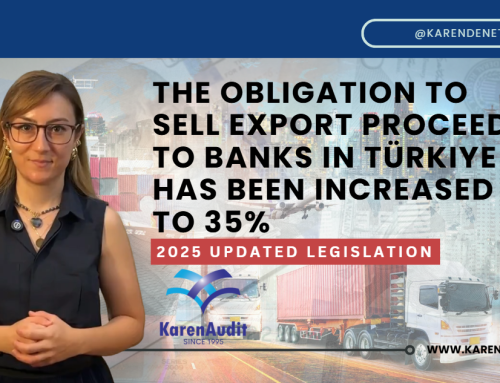04.09.2020
Inflation Developments
1. In July, consumer prices edged up by 0.58% and annual inflation dropped by 0.86 points to 11.76%. The decline in annual inflation stemmed from base effects led by tax adjustments made in the same month of the previous year, while the underlying trend of inflation remained on an upward track due to cost factors such as exchange rates and import prices as well as the strong credit impulse.
2. Annual inflation in food and non-alcoholic beverages fell by 0.20 points to 12.73%. The fruit group pushed annual unprocessed food inflation up by 1.56 points to 13.85%. While unprocessed food prices remained flat, the rise in egg prices stood out, and pulse prices, which displayed a significant increase in the first half of the year, declined. In July, processed food prices posted a mild outlook and annual processed food inflation fell by 1.77 points to 11.64% with the support of base effects.
3. Energy prices rose by 2.50% in July and annual energy inflation fell by 0.55 points to 8.57%. The recovery in international oil prices was the main driver of the rise in energy prices, which was accompanied by an increase in municipal water rates. Despite the monthly price increase, group’s annual inflation declined owing to the base effect led by the adjustment in electricity prices last year, which is among administered prices.
4. Annual core goods inflation decreased by 2.81 points to 8.58% in July due to the durable goods group. Despite the price hikes in furniture, automobiles and other electrical and non-electrical appliances, annual inflation was down by 5.65 points to 9.98% due to the base effects led by tax adjustments in the previous year. Meanwhile, there were price cuts close to seasonal averages in clothing and footwear group, whereas the other core goods prices registered mild increases.
5. Prices of services increased by 1.06% in July and annual services inflation rose by 0.04 points to 11.80%. Annual inflation decreased in rent, restaurants-hotels and transport, but increased in communication and other services. Pandemic-driven unit cost increases continued, albeit with a diminishing pace. Accordingly, prices in the restaurants-hotels group decelerated month-on-month, yet recorded a high increase. Transport services prices declined on a monthly basis.
6. In August, short and medium-term inflation expectations remained on an upward track. According to the CBRT Survey of Expectations, the year-end and 12-month-ahead inflation expectations were revised upwards from 10.22% to 10.82% and from 9.33% to 9.70%, respectively. In addition to survey-based indicators of inflation expectations, inflation compensation obtained from bond yields also picked up.
Factor Affecting Inflation
7. Economic recovery, which started in May following gradual steps towards normalization, is gaining pace. Adjusted for seasonal and calendar effects, the industrial production index was up 17.6% in June month-on-month. Turnover indices showed that sectoral diffusion of recovery has started to pick up. Moreover, positive signals for recovery in the services sector have increased, which are observed with a lag compared to those in the industrial sector.
8. Survey indicators as well as high-frequency data for the third quarter suggest a notable recovery in the economy after a sizeable contraction in the second quarter. Recent monetary and fiscal measures that aim to contain negative effects of the pandemic on the Turkish economy contributed to financial stability and economic recovery by supporting the potential output of the economy. While commercial loans have recently started to normalize, consumer loans have remained strong and supported domestic demand. Deferred expenditures for items with high sensitivity to financing conditions have remained robust, while electricity consumption has also recorded a steady rise. Meanwhile, services groups hardest hit by the pandemic such as transport, accommodation and food and beverages are picking up but continue to remain relatively weak.
9. High-frequency data indicate a sustained recovery in exports and a significant acceleration in imports. The recent upturn in imports, which has resulted from deferred demand as well as pandemic-related liquidity and credit policies, is expected to moderate with the gradual phasing down of these policy measures. Although tourism revenues declined due to the pandemic, easing of travel restrictions has started to contribute to a partial improvement. The recovery in exports of goods, relatively low levels of commodity prices and the level of the real exchange rate will support the current account balance in the upcoming periods. The Committee underscored the importance of the course of the current account balance in terms of a lasting recovery in economic activity and macrofinancial stability. Accordingly, effects of the recent measures on credit growth and composition and external balance are monitored closely.
10. While there are signs of partial improvement in the labor market due to economic recovery as well as the measures taken, unemployment rates continued to rise in the May period. In this period, non-farm employment receded further due to the services sector, while construction employment increased. After a downtrend for a while, the labor force participation rate remained flat. Leading indicators reveal that new job posts increased and employment opportunities continued to improve. The Committee assessed that subsidies provided through the unemployment insurance fund and current transfers, short-time work allowance in particular, have played a critical role in limiting the income loss of households and maintaining employment.
Monetary Policy and Risks
11. While global economic activity has shown signs of partial recovery in the third quarter following the normalization steps taken by several countries, uncertainties on recovery remain high due to the continued spread of the pandemic and the possibility of a second wave. Moreover, uncertainties remain regarding the possible effects of the outbreak and health measures on consumption habits and general spending behavior. In case normalization takes a long time or a second wave in the pandemic is seen in the upcoming period, the nascent recovery in global economy may be interrupted and fluctuations in the global risk appetite may be observed.
12. In the period following the July MPC meeting, crude oil prices continued to increase modestly on the back of recovering global activity. Still, the current level of oil prices is below the levels in the pre-pandemic period. On the other hand, there remain downside risks to commodity prices, particularly due to the uncertainty about the global economic activity, and global inflation rates are expected to be moderate throughout 2020.
13. Advanced and emerging economies continue to maintain expansionary monetary and fiscal stances. While long-term interest rates remain at historic lows across advanced economies, both central bank statements and market expectations suggest that the low-rate environment is likely to continue for a long period. The effectiveness of these policies for financial markets, growth and employment will depend on the course of the pandemic in each country and how much policy room each country has.
14. Portfolio flows to emerging economies proved more favorable than the previous month. In August, inflows to bond markets were moderate, while outflows from stock markets declined month-on-month. However, ongoing uncertainties over the global economic outlook might lead to fluctuations in the global risk appetite and portfolio flows to emerging economies. In fact, Turkey’s risk premium is fluctuating due to pandemic-driven global uncertainties and country-specific factors. During this period marked with high uncertainties, the pandemic disease is closely monitored for its evolving global impact on capital flows, financial conditions, international trade and commodity prices. Against this background, the CBRT will continue to monitor the effects of the pandemic on the Turkish economy and use the tools at its disposal in pursuit of its price stability and financial stability objectives.
15. Monetary, financial and fiscal measures as well as the credit expansion, driven mostly by state-owned banks, made a significant contribution to the uninterrupted flow of credit to the real sector and the economic recovery process. Thus, the economy’s production potential was supported and economic activity has started to recover significantly since May. The Committee, considering the rebound in the economy and its reflections into macro balances, assessed that conditions have evolved to allow for gradual withdrawal of the pandemic-specific supportive macro-policy steps.
16. Within the scope of liquidity measures taken in this regard, targeted additional liquidity facilities started to be gradually phased down. In addition, one-week repo auctions were suspended as of August 7; liquidity limits offered to primary dealers were first reduced to half, and then zero; banks’ borrowing limits at the CBRT Interbank Money Market for overnight transactions were reduced to half. As part of the tightening steps taken under liquidity management, traditional repo auctions started on August 13. These steps will continue to increase the weighted average funding cost in the upcoming period.
17. In line with the monetary tightening steps, the Turkish lira and FX reserve requirement ratios are raised for banks fulfilling real credit growth conditions. In this context, required reserve ratios applied to precious metal deposit accounts were set higher. Upon these decisions, a significant part of the liquidity provided through the accommodative measures implemented since March will be withdrawn. Normalization of the measures taken to contain the adverse effects of the pandemic and the tightening steps in liquidity policies have led to an increase in loan and deposit rates, and loan growth has started to decelerate. Loan growth and loan composition continue to be monitored closely for their impact on domestic and external balance.
18. Along with the pandemic-related rise in unit costs, exchange rate and credit developments restrain the demand-side disinflationary effects, and the trends of core inflation indicators have increased. Leading indicators for August suggest a sustained rise in the trend of inflation. As the normalization process continues, supply-side factors, which have prevailed recently due to pandemic-related restrictions, will phase out, yet the recent developments pose risks to the pricing behavior. In this respect, the gradual normalization of pandemic-specific financial measures and the recent tightening steps taken in liquidity management are judged to support macrofinancial stability. However, depending on the course of the pandemic, uncertainties regarding domestic and external demand conditions remain significant. Accordingly, the Committee decided to keep the policy rate unchanged, while continuing with liquidity measures.
19. The Committee assesses that maintaining a sustained disinflation process is a key factor for achieving lower sovereign risk, lower long-term interest rates, and stronger economic recovery. Keeping the disinflation process in track with the targeted path requires the continuation of a cautious monetary stance. In this respect, monetary stance will be determined by considering the indicators of the underlying inflation trend to ensure the continuation of the disinflation process. The Central Bank will continue to use all available instruments in pursuit of the price stability and financial stability objectives.
20. Fiscal policy actions, along with other monetary and financial measures taken during the pandemic, have supported the potential output of the economy by limiting the pandemic-related economic risks and significantly contributed to the start of a recovery in economic activity. Sustaining the coordination between monetary and fiscal policies during the recovery process, and determining the macro policy mix in a way that will ensure the continuation of the disinflation process while supporting the current account balance are crucial for maintaining healthy and stable growth. In the upcoming period, temporary and targeted fiscal and quasi-fiscal policy actions will be critical to support the sectors in which the recovery may take longer due to pandemic-related effects.
Source: Central Bank of the Republic of Turkey
Legal Notice: The information in this article is intended for information purposes only. It is not intended for professional information purposes specific to a person or an institution. Every institution has different requirements because of its own circumstances even though they bear a resemblance to each other. Consequently, it is your interest to consult on an expert before taking a decision based on information stated in this article and putting into practice. Neither Karen Audit nor related person or institutions are not responsible for any damages or losses that might occur in consequence of the use of the information in this article by private or formal, real or legal person and institutions.






